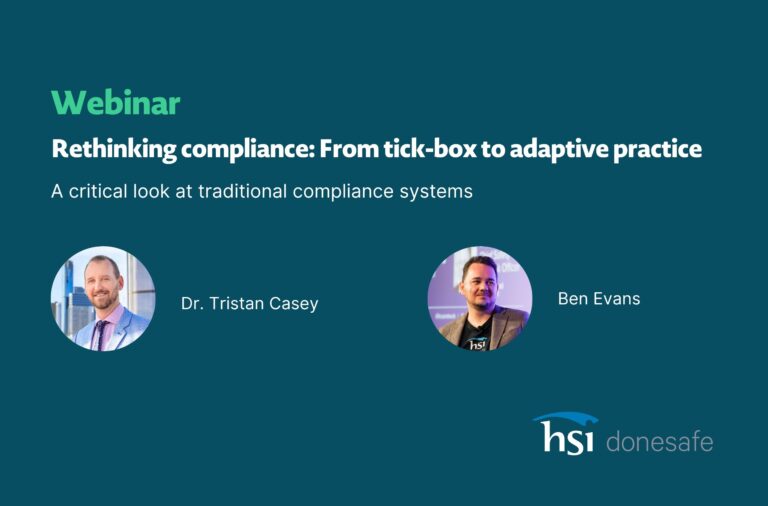
Employee participation in any near-miss program is vital, however, it can be challenging to get
workers to conform to change, especially when it can be time-consuming or seem unnecessary. All
workers, regardless of their role, have a long list of tasks to complete on a daily/weekly basis. How,
therefore, can you make near-miss reporting easy and speedy to lodge, to ensure workers can
quickly continue with their day?
The solution? Technology is to be introduced to document all relevant information and to educate
workers on why this is important. It needs to be quick and easy with the ability to add images,
videos, location, manager, and so on, from any device. This will also help with reporting at a
manager, location, or board level.
What is a Near Miss?
A near-miss is defined as an “unplanned event that did not result in an injury, illness, or damage – but had the potential to do so”.
A Workplace Near Miss or Near Hit?
Both terms are used when reporting incidents, events, and/or failure within the workplace.
Is it a good sign within an organization to report all near-miss incidents?
Not all organizations understand the purpose of near-miss reporting, or it may not be a fixed process
to follow when an incident arises. Near-miss reporting can benefit organizations by allowing the
gathering of cultural clues, and the assessment of processes and procedures, to determine how to
prevent the ‘near-misses’ from happening in the future or turning into a serious incident or a
fatality.
As the safety culture of an organization matures, the issue of near-miss reporting raises its head. A
mature organization has a culture that tracks near-misses, examines how and why the near-miss
happened, and then puts controls in place to minimize or eliminate the risk. However, not all
organizations understand the purpose of near-miss reporting, or even if they say they do, they may
fail to communicate the benefits that reporting near-misses can bring to the safety of the
organization.
Near-miss reporting is often described as a gift. The near-miss hasn’t caused harm, but is, instead, a
wake-up call that something could go wrong if adequate controls aren’t put in place.
The purpose of near reporting is to allow an organization to take cultural clues and assess their processes and procedures to determine how to prevent the “near-miss” occurring again with potential harm associated with it.
Some organizations celebrate low reported numbers of near-misses, however, many do this without
closely determining what the low numbers mean. Did the near-misses not happen, or is it more likely
that staff are just not reporting them? Two scenarios, but each can have a completely different
outcome in an organization.
Safety professionals agree that implementing a near-miss or close-call reporting system works to
rectify potential hazards and injuries.
Near-miss reporting adds value to an organization when it is treated proactively, that is, used to
improve the workplace and move towards rectifying risks. At the same time, support needs to be
given to those who report the near-miss, and the learning that comes out of the near-miss or close
call needs to filter through the whole organization.
Why Workers Don’t Report Near-Misses
There are five common reasons why employees/contractors don’t report near-misses or close calls.
- The fear of management reprisal. This could include the fear of losing your job for speaking up, being branded a snitch, or implicating others in the cause or the impact of the near-miss. For contractors, it could be the fear of loss of reputation, work, or an entire contract.
- The paperwork gets in the way. It’s just too much trouble to start up the paper trail which will go nowhere, so why should we all bother creating more work for everyone? Paperwork needs to be sent somewhere and that location may be different from your current or usual location – misplaced and loose paperwork can become a bigger problem.
- Nothing happens. Near-miss reporting is seen as a ‘tick and flick’ requirement for management. The person reporting the near-miss does not ever hear or see what happens once they have submitted their report.
- What’s a near-miss and what do I have to report on? The uncertainty of what constitutes a near-miss and how/what needs to be reported.
- It’s no biggie. The perception that it is ‘just something that happens in the line of work we do’.
10 Steps to Encourage Near-Miss Reporting
- Train people in hazard identification. This has your people thinking proactively about hazards before they escalate into near misses.
- Remind your leaders and frontline staff that near misses being reported – especially if there have been a few in the past – are opportunities to improve, not slacken the focus on safety systems and procedures.
- Look for and share stories of where near-miss reporting and rectifications have stopped a major incident or seek out and share near-miss reports and how they are being responded to on a daily/weekly basis.
- Work collaboratively to work out a system to report near misses. i.e. potential for severe harm to people, plant/assets, environment (high-risk). Keep it simple so everyone knows what to do and how to report. The less paperwork the better, if steps can be automated put them in place – Location, Workers details (name, role, manager), and anything that may assist a worker when logging a report.
- Make the reporting system easy to use and with the ability to collect useful data for rectification – this might mean you need to develop an anonymous reporting system, using technology i.e. online, an incident hotline, or a mobile app.
- Encourage verbal reporting. You may need to start by doing the paper-work for your team or have it readily available to complete on any device.
- Praise whoever submits a near-miss report. Let everyone know this is how they can play their part in stopping major incidents based on their reporting before it happens again. The difference between complacency and speaking up (about a near miss or hazard) can make the difference between no one getting hurt, an injury or a tragic fatality.
- ACTUALLY DO SOMETHING. You’ve been given a wake-up call by a near-miss, now use that knowledge of what ‘could have happened’ to put in controls to eliminate or manage the risk immediately.
- At the end of each week, month or quarter, review the types of near misses that have occurred, with your team, to highlight trends and patterns to determine coaching/training/reinforcement/procedure or systems review that your organization needs to undertake to strengthen the area.
- Acknowledge the fact that your team sees near miss reporting as “the way things are done around here” and it’s no longer a tick and flick exercise.
Want to find out how we can help you? Get in touch with our team today, click here to get in contact or visit our features page to find out more.
Share:



